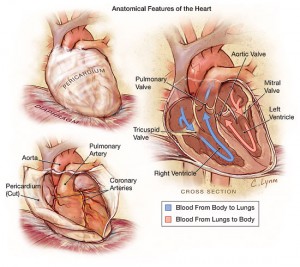Heliox vs Air-Oxygen Mixtures for the Treatment
Tuesday, October 28th, 2014Methods: The search strategy included searching electronic databases (MEDLINE, EMBASE, and The Cochrane Library) and the references of relevant articles. Study quality was assessed based on allocation concealment. Randomized controlled trials (RCTs) comparing heliox to an air-oxygen mixture (airO2) as an adjunct treatment in patients with acute asthmatic attacks were analyzed. For the qualitative portion of the analysis, all reports of the use of heliox in patients with acute asthma were included. 
Results: Four RCTs (n = 278) were found to have a common respiratory parameter (peak expiratory flow rate as a percentage of predicted) suitable for meta-analysis. Within the 92% confidence interval (CI), there was a small benefit with the use of heliox compared to airO2 (weighted mean difference, + 3%; 95% CI, — 2 to + 8%). There was also a slight improvement in the dyspnea index (weighted mean difference, 0.60; 95% CI, 0.04 to 1.16) with the use of heliox over airO2. Overall, five RCTs, one nonrandomized unblinded parallel trial, one retrospective case-matched control trial, three case series, and one case report had results in favor of heliox; one RCT and one case series showed no improvement with heliox; one RCT showed a possible detrimental effect with heliox; and 1 small RCT was inconclusive. Most investigators did not prevent entrainment of room air during heliox use or compensate for the lower nebulizing efficiency of heliox.
Conclusion: Based on surrogate markers, heliox may offer mild-to-moderate benefits in patients with acute asthma within the first hour of use, but its advantages become less apparent beyond 1 h, as most conventionally treated patients improve to similar levels, with or without it. The effect of heliox may be more pronounced in more severe cases. There are insufficient data on whether heliox can avert tracheal intubation, or change intensive care and hospital admission rates and duration, or mortality.
Abbreviations: airO2 = air-oxygen mixture; CI = confidence interval; DI = dyspnea index/score; FEF25 75 = forced expiratory flow from 25 to 75% of vital capacity; P(A-a)O2 = alveolar-arterial oxygen tension gradient; PEFR = peak expiratory flow rate; PEFR% = peak expiratory flow rate as a percentage of predicted; PP = pulsus paradoxus; AP = pressure gradient; Q = fluid flow rate; p = gas density; Re = Reynold’s number; RCT = randomized controlled trial; RR = respiratory rate; Spo2 = arterial blood oxygenation.
